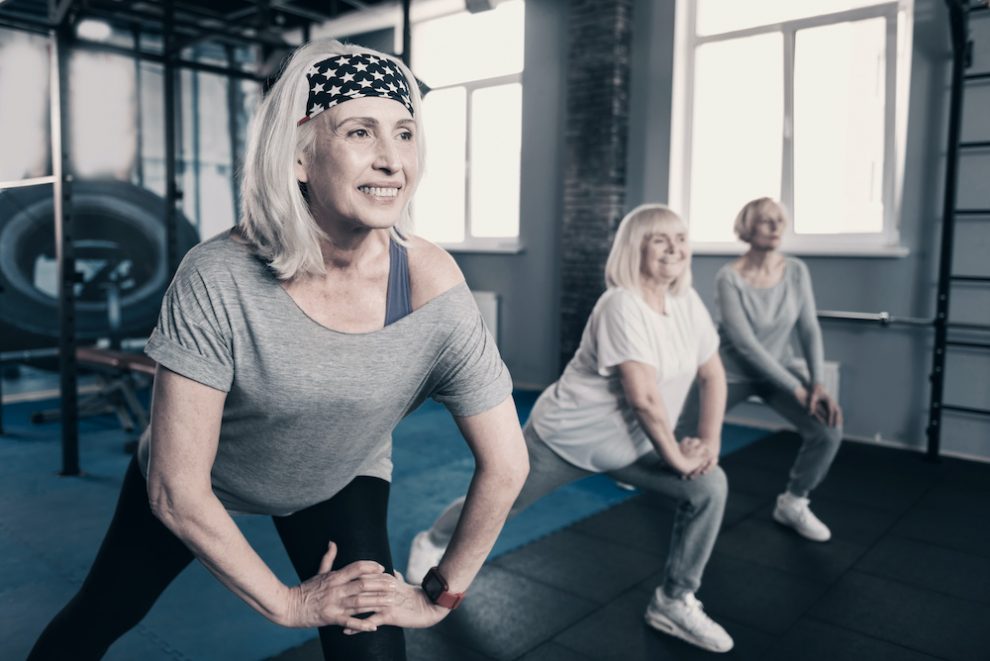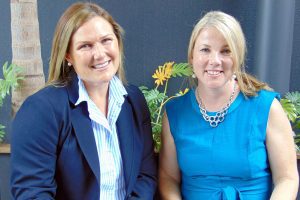Baby Boomers are leading the charge when it comes to getting active. Recent Fitness Australia research found that they are racking up 364 hours of physical activity each year compared to those under 40 who are only getting about 280 hours each year. There are few things boomers should consider when looking to start a new exercise, writes Chantal Brodrick.
They are largely focused on improving their health and confidence with a range of activities from walking, group fitness classes, swimming and even gardening. Feeling mentally stronger and socialising are also important to Baby Boomers. The best part? Physical activity can help you with all these things!
READ MORE HEALTH RELATED ARTICLES: Retirees Rating Their Health Higher Than Younger Gens
Physical activity is a bit of an all-rounder – not only does it help improve our physical health and prevent diseases like type 2 diabetes and heart disease, it also supports good mental health, creates opportunities to socialise and makes us feel more confident.
National physical activity guidelines recommend between 150-300 minutes of moderate physical activity but any movement, no matter what it is or how long you do it for, is beneficial both physically and mentally. Everyone should try and do some form of activity, preferably on most days of the week.
You should also aim to integrate strength training into your exercise routine two days a week. This could be things like lifting weights, squats, pull ups, push ups, or even activities such as yoga and digging while gardening. Muscle strength is important, even more so as we get older, to help reduce the risk of injuries, osteoporosis, and the symptoms of chronic diseases such as heart disease, arthritis, and type 2 diabetes.
There are a few things boomers should think about if looking to up your activity levels or try some new exercise. The first thing is to speak to your doctor or health professional. This is important because as we age, we are more likely to be affected by chronic disease. They will be able to advise you specifically on your current health and how this may impact or influence the types of activity you should do.
Next think about why you want to get more active. Is it health, maintaining independence, to meet new people, try something new, or a mix of all the above? Whatever it is, keeping this in mind is really important and will help you work out which activities you may want to try.
Knowing your baseline is also essential. Baby Boomers who have enjoyed a lifetime of physical activity should carry on doing so in a manner suited to their capability into later life, provided recommended safety procedures and guidelines are adhered to, but trying some new exercise can be fun! But if you are starting something for the first time, it is important to start at a manageable level and gradually build up. If you aren’t active at all, for example, you may start with short 5-10 minute walks around the block, before working your way up to longer walks. Rome wasn’t built in a day!
Now comes the fun part – find activities that allow you to do more of what you enjoy and you’ll be much more likely to stick to it. If you love being outdoors, try activities like bushwalking or outdoor group fitness classes. If you are a social butterfly, grab a coffee and go walking with a friend or consider joining a gym to meet new people. If you are thinking about joining a gym, fitness group or personal trainer, make sure they are registered with a reputable organisation such as Fitness Australia to ensure you will be in safe hands with experts who are up to date with the latest knowledge and skills.
It can even be as simple as looking at ways to mix activity into your existing routine. As an example, 43% of Baby Boomers regularly garden for fitness, so you could make the most of it and use a watering can as a weight to increase your muscle strength or start digging that new flower bed. Taking the stairs rather than the elevator, bike riding to work, or taking the dog for a longer walk are also easy ways to boost your physical activity.
Factoring in balance is also important as we get older. Try activities that require you to move your body in all directions such as yoga, dance, tai chi and even simple at-home moves like single-leg balancing, help hone your balance, in turn reducing the risk of falls and fractures.
If you are not sure where to start, head to the Fitness Australia website to explore a range of activities from Park Run, walking groups, gyms, wellness studios, trainers, or even Active Farmers events.
My last piece of advice is to have fun! Physical activity shouldn’t be a chore.























Add Comment